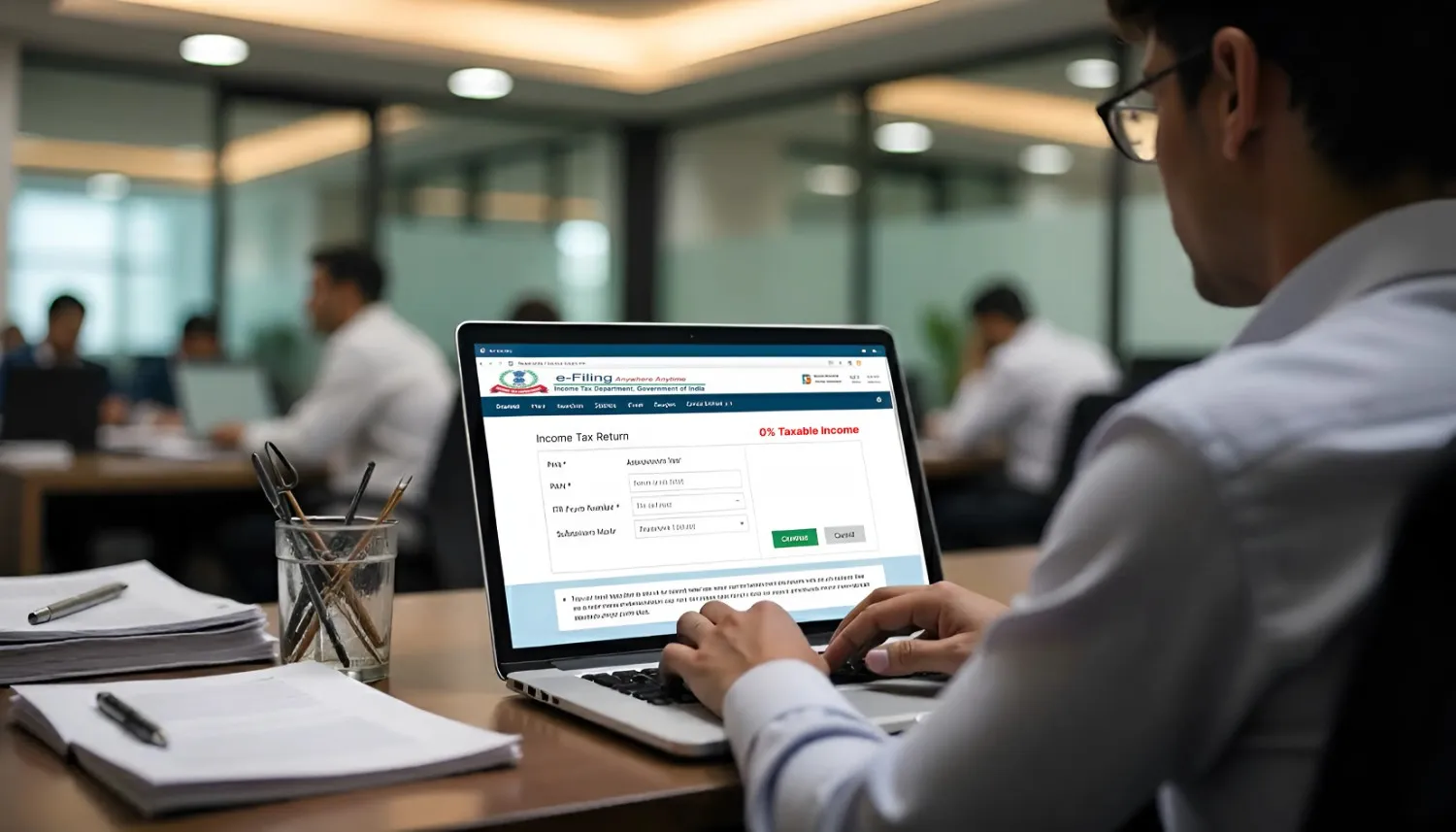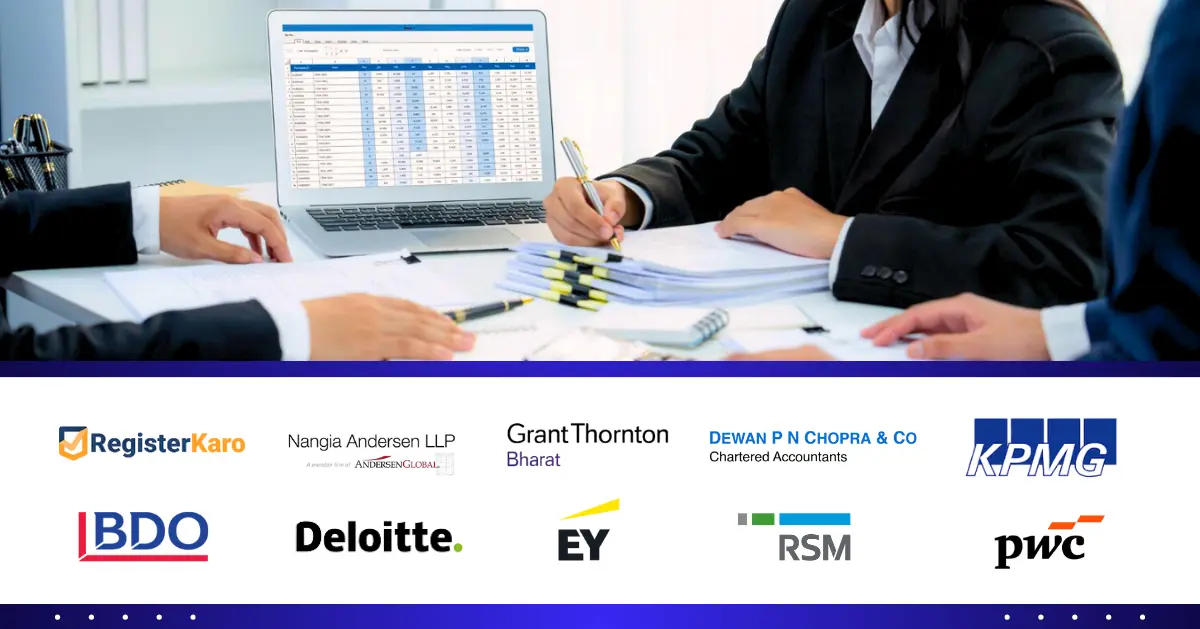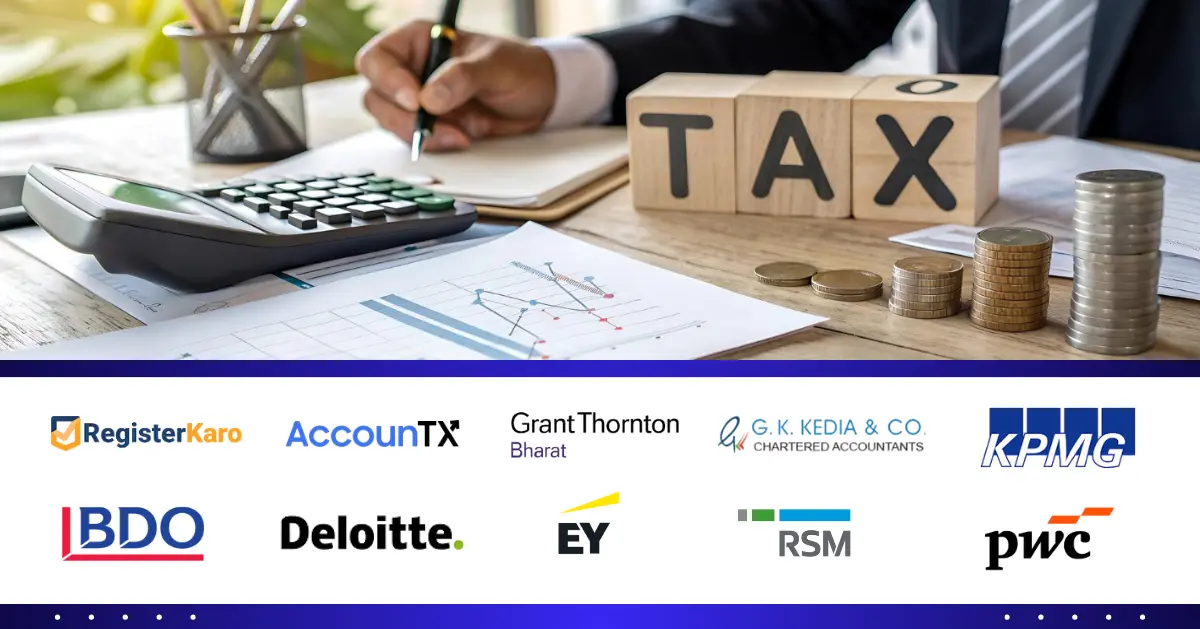
Understanding your taxes can often feel like navigating a maze. Over 60% of Indian taxpayers admit to being confused by exemptions and deductions. Fortunately, by learning about specific provisions, such as Section 10 of the Income Tax Act, you can significantly reduce your tax burden.
This blog simplifies section 10 for you, explaining the exemptions, allowances, and how you can claim them.
What is Section 10 of The Income Tax Act?
Section 10 is aspecial chapter in India’s tax rulebook, the Income Tax Act, 1961. Its main job is to list out different types of income that you don’t have to pay tax on. We call these “exempt incomes.” It aims to reduce your tax liability, encourage specific savings, and help cover certain expenses, especially if you are a salaried employee.
For many, understanding Section 10 of the Income Tax Act is key to smart tax planning. The basic exemption limit under the Income Tax Act sets a threshold below which no tax is payable. Whereas Section 10 helps reduce your taxable income even before this limit comes into play, thereby offering additional relief.
What are Exemptions and Allowances under Section 10 of The Income Tax Act?
Under Section 10 of the Income Tax Act, you will find two main categories:
1. Exempt Income: This is the income that the government completely excludes from your taxable income. You don’t pay any tax on it. Several types of exemptions under Section 10 of the Income Tax Act 1961 fall here.
2. Allowances: Employers often give allowances to employees for various purposes. Some of these allowances are exempt under the Income Tax Act and can be partially or fully exempt under section 10 of the Income Tax Act.
Key Exemptions Under Section 10 of The Income Tax Act:
Section 10 of the Income Tax Act is quite extensive.
Let’s explore some of the most common and important exemptions it offers.
A. For Salaried Individuals (Most Common):
If you are a salaried individual, section 10 provides several beneficial exemptions.
1. House Rent Allowance (HRA) – Section 10(13A) & Rule 2A
Many employers provide HRAs to help employees manage rental expenses. You can claim an HRA exemption through the Income Tax Act for the amount of HRA you receive, subject to certain conditions. The Income Tax Act provides this hra exemption in income tax act.
The actual exempt amount under this part of section 10 of the Income Tax Act is the minimum of:
- Actual HRA received.
- Rent paid minus 10% of your salary (Basic + Dearness Allowance).
- HRA exemption under Section 10 of the Income Tax Act allows 50% of salary for metro cities and 40% for non-metros. It’s a key tax-saving benefit, separate from the basic exemption limit.
2. Leave Travel Allowance (LTA) / Leave Travel Concession (LTC) – Section 10(5)
Section 10 allows an exemption for LTA received from your employer for travel within India for yourself and your family. You can claim this exemption for two journeys in a block of four calendar years.
The exemption covers only the actual travel costs (like air, rail, or bus fare). These allowances, exempt under the Income Tax Act, help promote tourism and employee welfare.
3. Gratuity – Section 10(10)
Gratuity is a payment your employer gives you for your past services. Section 10 of the Income Tax Act provides an exemption under section 10 for gratuity.
- Government employees receive fully exempt gratuity.
- For non-government employees, the exemption depends on whether they are covered under the Payment of Gratuity Act, 1972. There are specific monetary limits for this exemption under section 10 of the Income Tax Act.
4. Leave Encashment- Section 10(10AA)
If you encash your accumulated leave (get money for unused leave) at the time of retirement or resignation, section 10 of the Income Tax Act offers an exemption under section 10 of the income tax act.
- Government employees enjoy full exemption.
- Non-government employees have certain calculation conditions and monetary limits for this exemption under section 10 of the Income Tax Act 1961.
5. Commuted Pension – Section 10(10A)
Commuted pension (lump-sum) is partially or fully exempt under Section 10 of the Income Tax Act, depending on whether the employee is from the government or private sector. Uncommuted family pension is taxable under “Income from Other Sources,” with a standard deduction allowed. While Section 10 mainly covers commuted pension for pensioners, it also provides limited relief for family pensioners.
6. Special Allowances – Section 10(14)
Section 10 specifies certain allowances exempt under the Income Tax Act through Section 10(14). These are:
- Section 10(14)(i): Allowances granted to meet expenses incurred wholly, necessarily, and exclusively in performing official duties. Examples include travel allowance, daily allowance, uniform allowance, and research allowance. The exemption is limited to the actual amount spent.
- Section 10(14)(ii): Allowances granted to meet personal expenses. Examples include Children Education Allowance (exempt up to ₹100 per month per child for a maximum of two children) and Hostel Expenditure Allowance (exempt up to ₹300 per month per child for a maximum of two children).
Some people ask about medical allowance exemptions under the Income Tax Act. While a fixed ‘medical allowance’ is fully taxable, certain medical reimbursements or expenses can be claimed under other sections or as perquisites with specific rules.
Here’s a table for a better understanding of the exemptions and allowances available to salaried individuals under Section 10.
| Allowance / Exemption | Relevant Section | Description & Purpose | Exemption Conditions / Calculation / Limits |
| House Rent Allowance (HRA) | Section 10(13A) & Rule 2A | Allowance provided by employers to help employees manage rental expenses. | Exemption is the minimum of: 1. Actual HRA received. 2. Rent paid minus 10% of salary (Basic + Dearness Allowance). 3. 50% of salary (metro cities: Delhi, Mumbai, Chennai, Kolkata) or 40% of salary (non-metro cities). |
| Leave Travel Allowance (LTA) / Leave Travel Concession (LTC) | Section 10(5) | Allowance from an employer for travel expenses within India for self and family. Promotes tourism and employee welfare. | Exemption for two journeys in a block of four calendar years. Covers only actual travel costs (e.g., air, rail, bus fare). |
| Gratuity | Section 10(10) | Payment from an employer for past services. | Government employees: Fully exempt. Non-government employees: Exemption depends on coverage under the Payment of Gratuity Act, 1972, and involves specific monetary limits. |
| Leave Encashment | Section 10(10AA) | Payment received for unused accumulated leave at the time of retirement or resignation. | Government employees: Fully exempt. Non-government employees: Subject to certain calculation conditions and monetary limits. |
| Commuted Pension | Section 10(10A) | Lump-sum amount is received instead of a periodic pension when a pension is commuted. | Exemption rules apply to both government and non-government employees. (Note: Uncommuted family pension has a standard deduction under ‘Income from Other Sources’, separate from this section for the pensioner’s commuted pension). |
| Special Allowances | Section 10(14) | Allowances granted for specific purposes. | Divided into two sub-sections: |
| Section 10(14)(i) | Allowances to meet expenses wholly, necessarily, and exclusively incurred in performing official duties. | Examples: Travel allowance, daily allowance, uniform allowance, research allowance. Exemption is limited to the actual amount spent. | |
| Section 10(14)(ii) | Allowances are granted to meet personal expenses. | Examples: Children Education Allowance (exempt up to ₹100/month/child for max. 2 children), Hostel Expenditure Allowance (exempt up to ₹300/month/child for max. 2 children). (Note: Fixed ‘medical allowance’ is generally taxable; specific medical reimbursements were treated differently, especially in the old tax regime.) |
B. Other Important Exemptions:
Section 10 of the Income Tax Act also covers several other types of income.
1. Agricultural Income – Section 10(1)
Agricultural income from land in India is exempt from tax under Section 10 of the Income Tax Act, 1961. This well-known provision supports the agricultural sector, ensuring only genuine agricultural income qualifies. While such income is tax-free, it may affect tax calculation on non-agricultural income if it exceeds a certain limit.
2. Share of Profit from a Partnership Firm/LLP – Section 10(2A)
If you are a partner in a partnership firm or an LLP, your share of the firm’s/LLP’s profit is exempt under section 10. This is because the firm/LLP already pays tax on its profits. This exemption under section 10 of the Income Tax Act prevents double taxation.
3. Income from Life Insurance Policy – Section 10(10D)
Maturity proceeds from life insurance policies are generally exempt under Section 10 of the Income Tax Act, 1961, but only if the premium conditions are met. If the annual premium exceeds limits (e.g., 10% of the sum assured for policies issued after April 1, 2012), the exemption may not apply.
4. Payments from Provident Fund (PF) – Section 10(11) & 10(12)
Withdrawals from a Statutory Provident Fund and a Recognised Provident Fund (after fulfilling certain conditions like 5 years of continuous service) are exempt under section 10 of the Income Tax Act. Interest income from PF up to a certain limit is also exempt. However, recent rules have made interest on employee contributions exceeding ₹2.5 lakh (or ₹5 lakh in specific cases) per year taxable.
5. Payments from Sukanya Samriddhi Yojana – Section 10(11A)
Any payment received from an account opened under the Sukanya Samriddhi Yojana (a government savings scheme for girl children) is fully exempt from tax under section 10 of the Income Tax Act. This exemption promotes savings for the girl child’s future.
6. Scholarships – Section 10(16)
Scholarships granted to meet the cost of education are exempt from income tax under section 10 of the Income Tax Act. This exemption under section 10 of the Income Tax Act helps students pursue education without an additional tax burden on the scholarship amount.
7. Income of Specified Funds/Institutions – Section 10(23C)
Section 10 provides exemptions for the income of certain specified funds or institutions like the Prime Minister’s National Relief Fund, universities, hospitals, and other charitable institutions, subject to their meeting specific conditions and obtaining necessary approvals.
8. Income of Members of STs – Section 10(26) & 10(26AAA)
Individuals belonging to STs residing in specified areas (like certain North-Eastern states) may have certain incomes exempt from tax under section 10 of the Income Tax Act, subject to specific conditions and sources.
9. Capital Gains Exemptions (Brief Mention)
Section 10 includes specific capital gains exemptions, like 10(37) for urban agricultural land. Dividend income, once exempt under 10(34), is now taxable for most investors.
10. Allowances for SEZ Units – Section 10AA
For businesses, Section 10AA (which is closely related to the scheme of Section 10) provides deductions for profits derived by units located in Special Economic Zones (SEZs), subject to fulfilling specified conditions and timelines.
Here’s the information in a table for better understanding:
| Exemption Category / Section | Description of Exemption | Key Conditions / Notes |
| Agricultural Income – Section 10(1) | Income earned from agricultural land. | The land must be situated in India. Income must be genuinely from agricultural operations. The exemption encourages the agricultural sector. Tax calculation on non-agricultural income can be affected if agricultural income exceeds a threshold, but agricultural income itself remains untaxed. |
| Share of Profit from a Partnership Firm/LLP – Section 10(2A) | Partner’s share of the profit from a partnership firm or LLP. | The firm/LLP already pays tax on its profits, so this prevents double taxation. |
| Income from Life Insurance Policy – Section 10(10D) | Maturity proceeds or any sum received (including a bonus) from a life insurance policy. | Conditions apply regarding premium paid vs. sum assured (e.g., annual premium not exceeding 10% of sum assured for policies issued after April 1, 2012). Keyman insurance policies and certain ULIPs/high-premium policies have different rules. |
| Payments from Provident Fund (PF) – Section 10(11) & 10(12) | Withdrawals from Statutory Provident Fund and Recognised Provident Fund. Interest income from PF up to a certain limit. | For Recognised PF, conditions like 5 years of continuous service may apply for withdrawal exemption. Recent rules make interest on employee contributions exceeding ₹2.5 lakh (or ₹5 lakh in specific cases) per year taxable. |
| Payments from Sukanya Samriddhi Yojana – Section 10(11A) | Any payment received from an account opened under the Sukanya Samriddhi Yojana. | This scheme is a government savings scheme for girl children; the exemption promotes savings for their future. |
| Scholarships – Section 10(16) | Scholarships are granted to meet the cost of education. | Helps students pursue education without an additional tax burden on the scholarship amount. |
| Income of Specified Funds/Institutions – Section 10(23C) | Income of certain specified funds or institutions (e.g., Prime Minister’s National Relief Fund, universities, hospitals, charitable institutions). | Subject to meeting specific conditions and obtaining necessary approvals. |
| Income of Members of STs – Section 10(26) & 10(26AAA) | Certain incomes of individuals belonging to STs residing in specified areas. | Subject to specific conditions, sources of income, and residency in areas like certain North-Eastern states. |
| Capital Gains Exemptions (Brief Mention) – e.g., Section 10(37) | Certain capital gains, like those on compulsory acquisition of urban agricultural land (Section 10(37)). | Section 10 provides specific instances. Note: Dividend exemption under Section 10(34) has changed; dividends are now generally taxable in the hands of shareholders as DDT is abolished. |
| Allowances for SEZ Units – Section 10AA | Deductions for profits derived by units located in Special Economic Zones (SEZs). | Closely related to the scheme of Section 10. Subject to fulfilling specified conditions and timelines. Primarily for businesses. |
Disclaimer: The information provided in this blog is for general guidance and informational purposes only. Tax laws are subject to change, and the application of tax laws can vary widely based on the specific facts and circumstances involved. It is recommended to connect with a qualified professional for personalized advice.
How to Claim Exemptions and Allowances Under Section 10 of The Income Tax Act
Claiming tax exemptions under Section 10 is essential for reducing your tax burden. Here’s a structured way salaried individuals can make the most of these benefits:
1. Submit Proofs to Your Employer
To claim exemptions such as:
- House Rent Allowance (HRA) – provide rent receipts or a rental agreement.
- Leave Travel Allowance (LTA) – share travel tickets or boarding passes.
Your employer will include these when calculating your TDS and reflect them accurately in Form 16.
2. Claim Directly While Filing ITR
If you didn’t submit documents to your employer or if the exemption isn’t employer-related (like certain interest incomes), you can still claim it when filing your Income Tax Return (ITR).
Be sure to:
- Report all exempt income correctly under the appropriate ITR schedule.
- Choose the correct ITR form based on your income type.
3. Fill Out Form 12BB
Form 12BB is used by employees to declare:
- Investments eligible for deductions (e.g., PPF, ELSS, LIC)
- Exemptions like HRA and LTA
Important Considerations in Section 10 of the Income Tax Act
Here are the key Considerations for Section 10 Exemptions.
Old vs. New Tax Regime & Compliance
| Aspect/Consideration | Details/Implications |
| Old vs. New Tax Regime Comparison | The new tax regime (Section 115BAC) provides lower tax rates but eliminates most common exemptions and deductions available under Section 10 (e.g., HRA, LTA, special allowances under Sec 10(14)). |
| Available Exemptions in the New Regime | Only a few exemptions under Section 10, such as gratuity (within prescribed limits) and commuted pension, generally remain available in the new regime. Most others, including any standard medical allowance benefits, are not. |
| Regime Evaluation Requirement | Taxpayers need to carefully evaluate and compare their tax liability under both the old and new regimes to decide which is more beneficial based on their income structure and the exemptions they are eligible for. |
| Basic Exemption Limit Variation | The basic exemption limit (the income level below which no tax is payable) can differ slightly between the old and new tax regimes, which can influence the final tax payable across various income slabs. |
| Conditions for Claiming Exemptions | Each exemption listed under Section 10 of the Income Tax Act comes with specific eligibility criteria, conditions, and often monetary limits. These must be strictly fulfilled to legally claim the tax benefit. |
| Documentation Requirement | It is crucial to maintain thorough and accurate documentation (e.g., rent receipts for HRA, travel bills for LTA, investment proofs) for several years. The Income Tax Department can request these proofs to verify the exemptions claimed. |
Final Thoughts
Section 10 plays a vital role in reducing your taxable income by exempting various types of earnings and allowances. By understanding the provisions of section 10, such as the HRA exemption in the Income Tax Act, agricultural income exempt under the Income Tax Act, and various other allowances exempt under the Income Tax Act, you can significantly optimize your tax liability.
Remember, understanding the basic exemption limit under the Income Tax Act is just one part; leveraging is another key strategy.
Frequently Asked Questions
The main purpose is to list specific incomes that are exempt from income tax, thereby reducing the overall tax burden on taxpayers.




